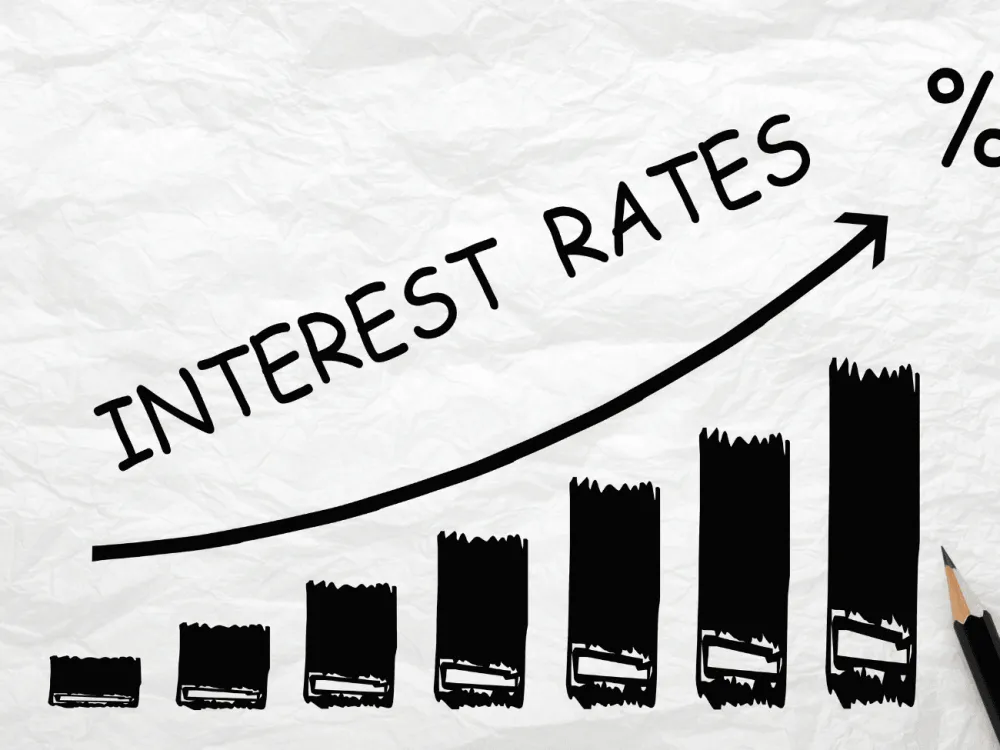
A chart showing rising interest rates
Will Hiking Interest Rates Really Bring Down Inflation?
There’s often a world of difference between economic theory and practice, with this being borne out by the Bank of England’s recent attempts to lower inflation by continuing to hike the base rate of interest.
This has had minimal impact so far, with inflation remaining stubborn and unchanged at 8.7% in May. City economists had expected the rate of price increases to fall to at least 8.4% last month, with food inflation weighing particularly heavy on households and businesses alike.
The BoE has subsequently initiated its 13th consecutive base rate hike too, lifting the benchmark by 50 basis points from 4.5% to 5.0%. So, the policy has had minimal impact so far, other than further squeezing household finances by causing variable rate mortgage repayments to soar.
But what exactly is the theory behind this particular monetary policy, and can it work effectively in the current economic climate? Let’s find out!
Economic Theory vs Reality - And the Challenges Facing Households
Interest rate manipulation has been central to monetary policies for centuries, especially as part of quantitative easing measures. The reason for this is simple, as hiking the base rate makes it more costly to borrow money and simultaneously incentivises customers to save, theoretically creating a downward pressure on inflation.
Because of this, interest rates and inflation tend to enjoy an inverse relationship, and one that has been observed and measured over years of economic activity.
This theory is certainly being put to the test by the central bank, with the nine-strong monetary policy committee voting 7-2 to hike the base rate to 5.0% at their last meeting and continue a run of consecutive raises that began in December 2021.
As a result, the base interest rate in the UK is now at its highest in 15 years, while further raises may be necessary given the stubborn nature of prices and the central bank’s desire to drive inflation back down towards its target of 2%.
It’s here where the chasm between theory and practice becomes apparent. After all, even if we accept the inverse relationship that exists between inflation and interest rates, there are key variables that must also be considered in the current economic climate.
For example, inflation is currently high despite the economy being strained and having started 2023 on the precipice of a technical recession. Inflationary recessions are relatively rare, as prices usually rise as a result of increased consumer spending and higher demand for goods and services.
In this case, however, the war in Ukraine and unresolved supply chain cost issues that have arisen as a result of Brexit are major culprits, and an inability to address or account for these fully is making it much harder to bring prices down (especially in the case of food and energy).
What’s more, the sheer scale of inflation (which peaked above 10% for much of quarter one) means that the BoE has had to initiate multiple base rate hikes to have any chance of success.
Such measures also take time to succeed, meaning that households are having to deal with a combination of inflationary pressure and increased borrowing costs indefinitely in the current climate.
The Potential Impact of This Monetary Policy
According to recent research by the StepChange debt charity, nearly seven million mortgage customers (including a majority with variable rate products) had found it difficult keeping up with their bills and credit commitments in the last few months.
What’s more, the independent Institute for Fiscal Studies warned that a staggering 1.4 million mortgage holders (half of them aged under 40) could lose more than 20% of their disposable income if the current monetary policy position is maintained, especially if the measures continue to do little by way of reducing inflation consistently.
In terms of wider economic performance, a sustained decline in customer spending and disposable income may also see growth stagnate and business revenues decline. Job losses and wage stagnation may ensue, suggesting that the central bank will have to consider their next steps carefully.
There’s always the chance that central banks can overreact when tackling inflation, raising the base rate either too quickly or for an extended period of time.
Of course, this must be offset by the dangers posed by failing to stabilise inflation as it continues to rise, but either way, the bank cannot afford to be myopic when formulating its monetary policy.
The Bottom Line - Tackling Inflation, But at What Cost?
The markets certainly think that the central bank will persist with its monetary policy for the foreseeable future, with further base rate hikes to 6.5% being factored into currency trading decisions.
This will help to keep the pound well supported against the Euro and its other G7 rivals, while traders will be able to leverage the best forex signals to execute their orders and profit from the monetary policy deployed.
As for households and businesses, however, they must brace themselves from an increasingly challenging and precarious set of economic conditions, with the cost of living likely to soar further in line with increased mortgage and borrowing repayments.
Overall, it’s likely that the decision to continually hike interest rates will eventually prove effective in driving inflation down, although this could be a slow, arduous and painful process. This will also come at a considerable cost to British citizens, and the bank must constantly review its policy and consider a multifaceted economic strategy if it's to lower inflation responsibly.


